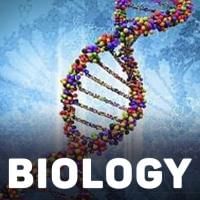NEET Exam > NEET Questions > DNA containsnucleobases, sugar and phosphate....
Start Learning for Free
DNA contains nucleobases, sugar and phosphate. Removal of which among these from a DNA sample will not significantly affect the length of DNA?
- a)Nucleobases
- b)Sugar
- c)Phosphate
- d)None of the above
Correct answer is option 'A'. Can you explain this answer?
Most Upvoted Answer
DNA containsnucleobases, sugar and phosphate. Removal of which among t...
NUCLEOBASE(it is base pairing between nitrogen bases i.e A ,T,G,C) therefore it does not affect the length of DNA where as sugar phosphate bond is the back bone of DNA therefore they both affect the length of DNA
Free Test
FREE
| Start Free Test |
Community Answer
DNA containsnucleobases, sugar and phosphate. Removal of which among t...
Option A is correct
because sugar and phosphate form the backbone of polynucleotide chain and nucleobases means nitrogenous base are branch out from it so removal of it will not affect the length of DNA
because sugar and phosphate form the backbone of polynucleotide chain and nucleobases means nitrogenous base are branch out from it so removal of it will not affect the length of DNA

|
Explore Courses for NEET exam
|

|
Question Description
DNA containsnucleobases, sugar and phosphate. Removal of which among these from a DNA sample will not significantly affect the length of DNA?a)Nucleobasesb)Sugarc)Phosphated)None of the aboveCorrect answer is option 'A'. Can you explain this answer? for NEET 2025 is part of NEET preparation. The Question and answers have been prepared according to the NEET exam syllabus. Information about DNA containsnucleobases, sugar and phosphate. Removal of which among these from a DNA sample will not significantly affect the length of DNA?a)Nucleobasesb)Sugarc)Phosphated)None of the aboveCorrect answer is option 'A'. Can you explain this answer? covers all topics & solutions for NEET 2025 Exam. Find important definitions, questions, meanings, examples, exercises and tests below for DNA containsnucleobases, sugar and phosphate. Removal of which among these from a DNA sample will not significantly affect the length of DNA?a)Nucleobasesb)Sugarc)Phosphated)None of the aboveCorrect answer is option 'A'. Can you explain this answer?.
DNA containsnucleobases, sugar and phosphate. Removal of which among these from a DNA sample will not significantly affect the length of DNA?a)Nucleobasesb)Sugarc)Phosphated)None of the aboveCorrect answer is option 'A'. Can you explain this answer? for NEET 2025 is part of NEET preparation. The Question and answers have been prepared according to the NEET exam syllabus. Information about DNA containsnucleobases, sugar and phosphate. Removal of which among these from a DNA sample will not significantly affect the length of DNA?a)Nucleobasesb)Sugarc)Phosphated)None of the aboveCorrect answer is option 'A'. Can you explain this answer? covers all topics & solutions for NEET 2025 Exam. Find important definitions, questions, meanings, examples, exercises and tests below for DNA containsnucleobases, sugar and phosphate. Removal of which among these from a DNA sample will not significantly affect the length of DNA?a)Nucleobasesb)Sugarc)Phosphated)None of the aboveCorrect answer is option 'A'. Can you explain this answer?.
Solutions for DNA containsnucleobases, sugar and phosphate. Removal of which among these from a DNA sample will not significantly affect the length of DNA?a)Nucleobasesb)Sugarc)Phosphated)None of the aboveCorrect answer is option 'A'. Can you explain this answer? in English & in Hindi are available as part of our courses for NEET.
Download more important topics, notes, lectures and mock test series for NEET Exam by signing up for free.
Here you can find the meaning of DNA containsnucleobases, sugar and phosphate. Removal of which among these from a DNA sample will not significantly affect the length of DNA?a)Nucleobasesb)Sugarc)Phosphated)None of the aboveCorrect answer is option 'A'. Can you explain this answer? defined & explained in the simplest way possible. Besides giving the explanation of
DNA containsnucleobases, sugar and phosphate. Removal of which among these from a DNA sample will not significantly affect the length of DNA?a)Nucleobasesb)Sugarc)Phosphated)None of the aboveCorrect answer is option 'A'. Can you explain this answer?, a detailed solution for DNA containsnucleobases, sugar and phosphate. Removal of which among these from a DNA sample will not significantly affect the length of DNA?a)Nucleobasesb)Sugarc)Phosphated)None of the aboveCorrect answer is option 'A'. Can you explain this answer? has been provided alongside types of DNA containsnucleobases, sugar and phosphate. Removal of which among these from a DNA sample will not significantly affect the length of DNA?a)Nucleobasesb)Sugarc)Phosphated)None of the aboveCorrect answer is option 'A'. Can you explain this answer? theory, EduRev gives you an
ample number of questions to practice DNA containsnucleobases, sugar and phosphate. Removal of which among these from a DNA sample will not significantly affect the length of DNA?a)Nucleobasesb)Sugarc)Phosphated)None of the aboveCorrect answer is option 'A'. Can you explain this answer? tests, examples and also practice NEET tests.

|
Explore Courses for NEET exam
|

|
Signup for Free!
Signup to see your scores go up within 7 days! Learn & Practice with 1000+ FREE Notes, Videos & Tests.
























